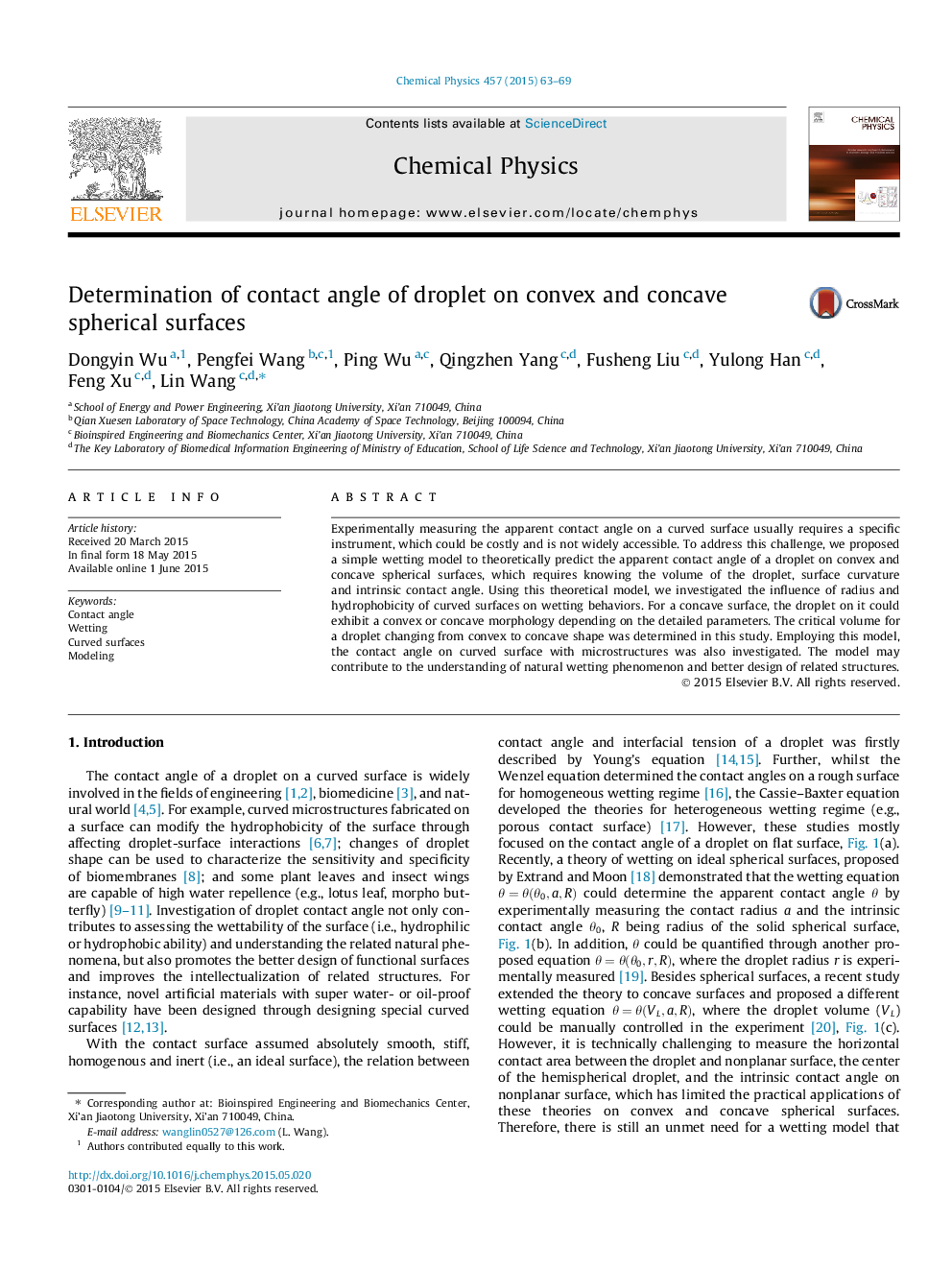| Article ID | Journal | Published Year | Pages | File Type |
|---|---|---|---|---|
| 5373319 | Chemical Physics | 2015 | 7 Pages |
â¢We developed a theoretical model to predict the contact angles on curved surfaces.â¢We validated the correctness of the model against experimental results.â¢The model was also extended to the wetting behavior on structured-curved surfaces.
Experimentally measuring the apparent contact angle on a curved surface usually requires a specific instrument, which could be costly and is not widely accessible. To address this challenge, we proposed a simple wetting model to theoretically predict the apparent contact angle of a droplet on convex and concave spherical surfaces, which requires knowing the volume of the droplet, surface curvature and intrinsic contact angle. Using this theoretical model, we investigated the influence of radius and hydrophobicity of curved surfaces on wetting behaviors. For a concave surface, the droplet on it could exhibit a convex or concave morphology depending on the detailed parameters. The critical volume for a droplet changing from convex to concave shape was determined in this study. Employing this model, the contact angle on curved surface with microstructures was also investigated. The model may contribute to the understanding of natural wetting phenomenon and better design of related structures.
Graphical abstractDownload high-res image (41KB)Download full-size image
